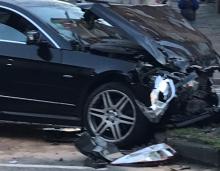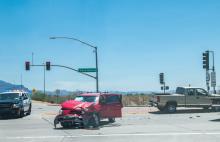Nearly 36,600 people died on US roadways last year, a decrease of 2.4 percent from 2017, according to recently released figures from
But there is serious cause for concern about the safety standards on US roads. While the fatality rate for vehicle occupants has dropped, the numbers of vulnerable road users being injured or killed on US roads has increased.
There were 6,283 pedestrians killed on US roads in 2018, an increase of 3.4% from 2017 and the highest recorded figure since 1990. Cyclists also are at risk on US roads, with 853 being killed in 2018, an increase of 6.3% from 2017. Of particular concern is the risk to female cyclists, with an increase in fatalities of 29.2% for 2018 compared to 2017.
While the automotive sector is introducing safety technology to vehicles such as emergency braking systems, lane departure warnings and tools to alert drivers to the presence of pedestrians, it seems that the safety benefits are not being passed on to vulnerable road users. Tests of auto braking systems carried out by the
With around 76% of pedestrian fatalities occurring at night, it is of more concern still that pedestrian detection technologies fitted to cars are mostly ineffective at night according to the AAA’s research.
Meanwhile further technology may be needed to tackle another issue, driver tiredness. The NHTSA’s research of police crash data also shows that over 100,000 crashes are caused by tired driving. This accounts for some 1,550 deaths and 71,000 injuries.
While technology has been developed to detect driver fatigue, it is used by very few auto makers at present.
The US needs to address its road safety problems
The US has serious road safety issues that need to be addressed. In 2018, close to 36,600 people were killed in road crashes, according to data from the National Highway Traffic Safety Administration (NHTSA). The fatality rate for 2018 represents a 2.4% drop from 2017. In addition, the road death rate/160 million vehicle km traveled also decreased by 3.4%, from 1.17 in 2017 to 1.13 in 2018. And the NHTSA says it is the lowest fatality rate since 2014.
Nearly 36,600 people died on US roadways last year, a
The US has serious road safety issues that need to be addressed. In 2018, close to 36,600 people were killed in road crashes, according to data from the 2467 National Highway Traffic Safety Administration (NHTSA). The fatality rate for 2018 represents a 2.4% drop from 2017. In addition, the road death rate/160 million vehicle km traveled also decreased by 3.4%, from 1.17 in 2017 to 1.13 in 2018. And the NHTSA says it is the lowest fatality rate since 2014.






